
In October 2012 I started to photograph under water. I am not a diver, I only snorkel. Nevertheless, even between the water surface and a depth of about three metres you will get a view of a different world.
I use a U-B100 ewa-marine flexible housing for my DSLRs. In my article Under water with your Nikon you will find more information about the housing itself.
This article is about my lens experiences in conjunction with the ewa-marine housing under water. The ewa-marine housings have a flat glass port. Because the internal pressure of a flexible housing will always match the external pressure, the front glass is very thin. Hard housings have thicker glass.
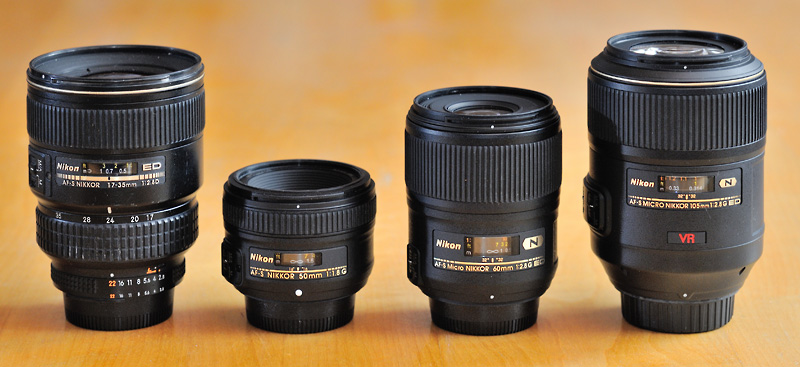
|
|
These four AF-S Nikkors I have used intensively under water: 17-35mm f/2.8, 50mm f/1.8, Micro 60mm f/2.8 and Micro 105mm f/2.8 VR. |
The lens you want to use in conjunction with a flexible housing under water should not change its length while focussing. Otherwise the shape of the housing would change which might demand extraordinary forces for focussing.
The above-mentioned four lenses work without any problems in conjunction with my U-B100.
The adapter ring that comes with the U-B100 has a filter thread of 77mm. If the lens has a smaller thread you need corresponding step-up rings. I use a 62-77mm ring for the Micro-Nikkors and an additional 58-62mm ring for the 50mm f/1.8. I was a bit afraid to use lenses with plastic filter threads here because of the shearforces that occur when you press the lens towards the frontglass (or when you pull it out again), but I haven't had any problems yet!
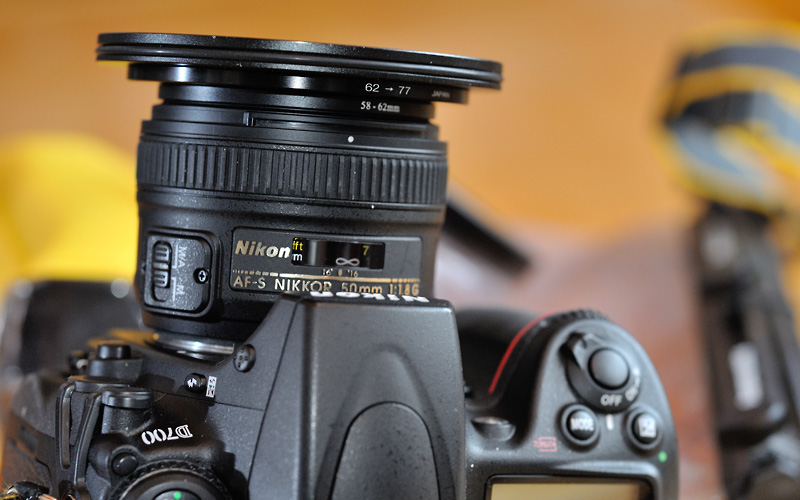
|
|
The ewa-marine adapter with the rubber ring on the outside, mounted on the AF-S 50mm via two step-up rings. Although the lens has a plastic filter thread nothing has broken, yet. |
A serious underwater photographer would sniff at using a focal length of 20mm behind flat glass! But I do exactly that. The alternative would be to buy a hard housing and a dome port for a few thousand euros!
The problem that occurs is the "aquarium effect" (see my 'links' section).
One symptom of this effect is distortion: while wide-angle lenses in air often show a slight barrel distortion they produce a hefty pincushion distortion under water.
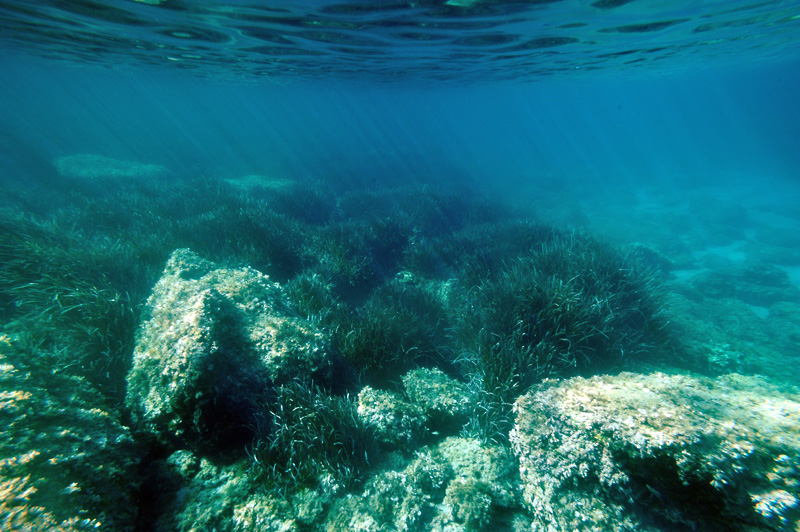
|
|
Captured with the D700 and AF-S Nikkor 17-35mm at 20mm. The water surface shows the pincushion distortion. The distortion can easily be removed by a distortion correction in your image processing application. In PSE I have to use a correction value of -25 for an image made with 20mm. But please note: Through such a correction you lose some wideness! |
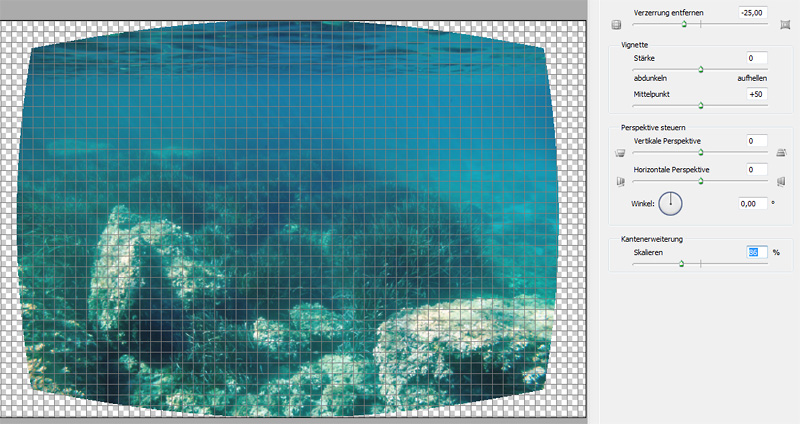
|
A second and more annoying problem of the aquarium effect is the ugly-looking corners. Because both problems are two sides of the same coin, a distortion correction helps here as well!
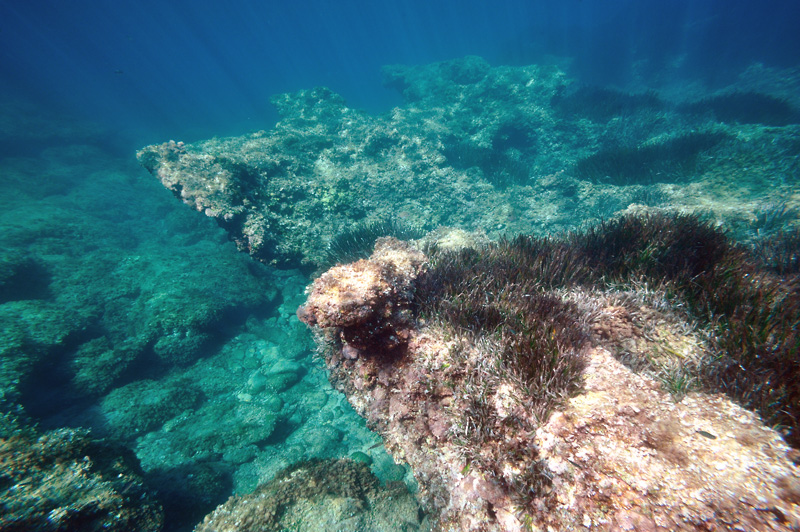
|
|
This image was also shot with the D700 and the AF-S Nikkor 17-35mm at 20mm. Above without correction, below with the -25 correction. |
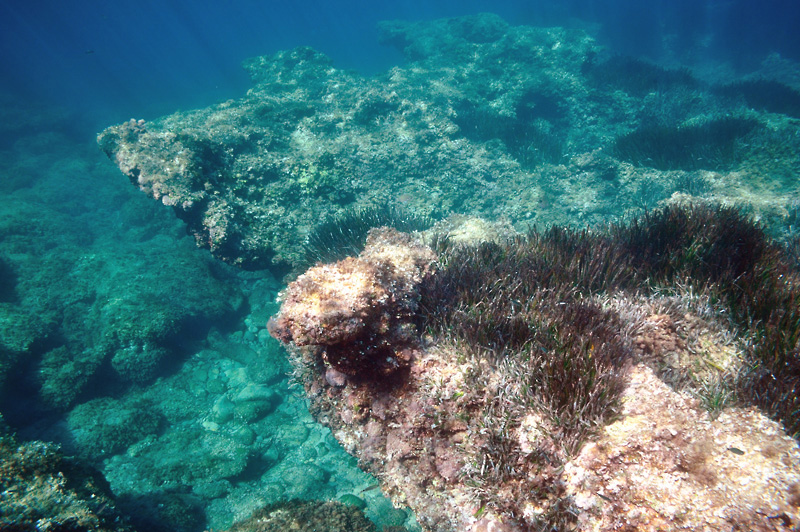
|
|
|
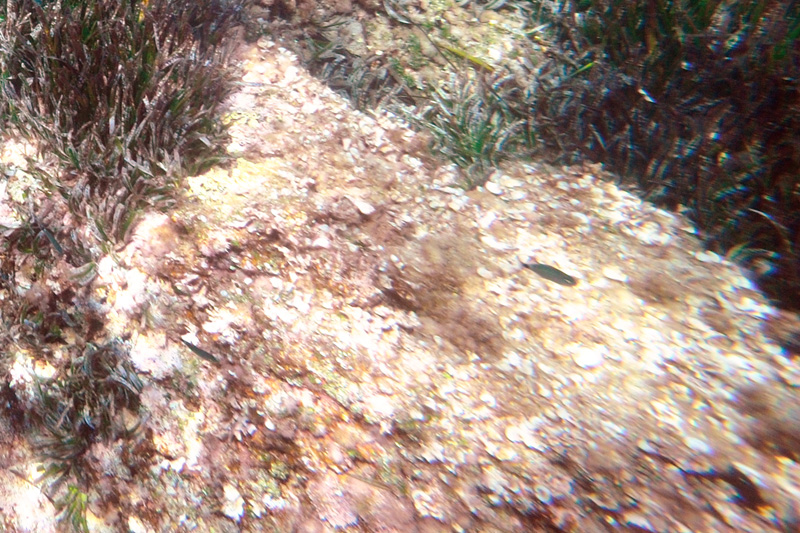
|
|
The lower right corners at 50%. The correction won't make the corners really sharp, but much less ugly! |
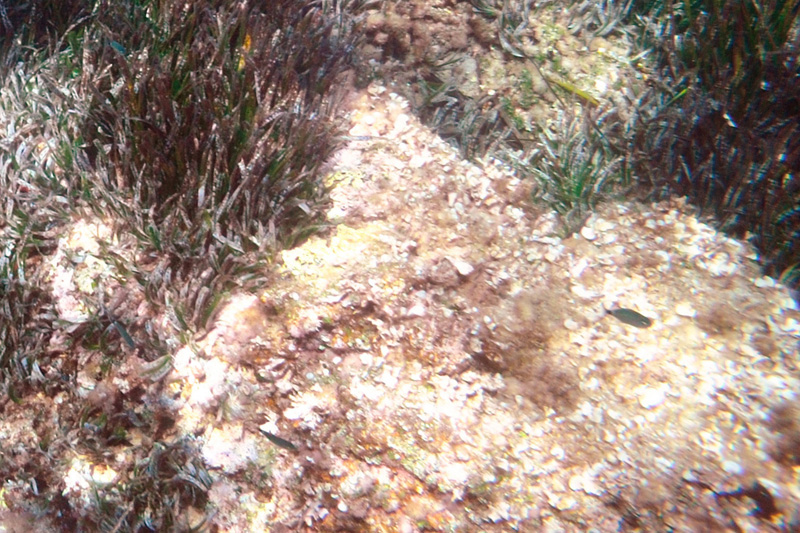
|
For photographing animals or plants under water I mostly prefer a longer focal length. But for "underwater landscape" photos I don't want to miss my wide-angle zoom. In my opinion the results are usable!
20mm behind flat glass under water results in an effective focal length of about 27mm. Including the distortion correction it is about 32mm.
Last summer I made the first test shoots with my AF-S Nikkor 50mm f/1.8 under water in the Skagerrak and in Norwegian lakes. The results were really impressive! In the range from F5.6 to F11 the lens delivers a uniform sharpness across the frame. The maximum magnification under water is about 1:4.8 and the effective focal lenght is 67mm. In contrast to air, the bokeh under water is smooth.
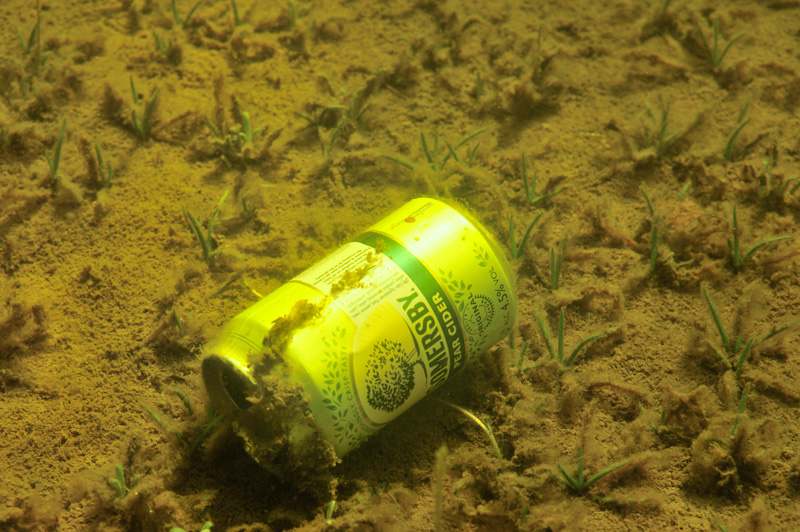
|
|
Sharp corners! This test shoot was captured in the Telemark Canal in Norway with the D700 plus the AF-S 50mm f/1.8 at F8. |
For Minorca I bought an AF-S Micro-Nikkor 60mm f/2.8. After the great results from the 50mm lens my expectations were high. But the results were a bit disappointing! Yes, the 60mm is sharp. But the corners are often unsharp and ugly. My impression is that this lens has a significant field curvature under water. A distortion correction helps here a bit, too.
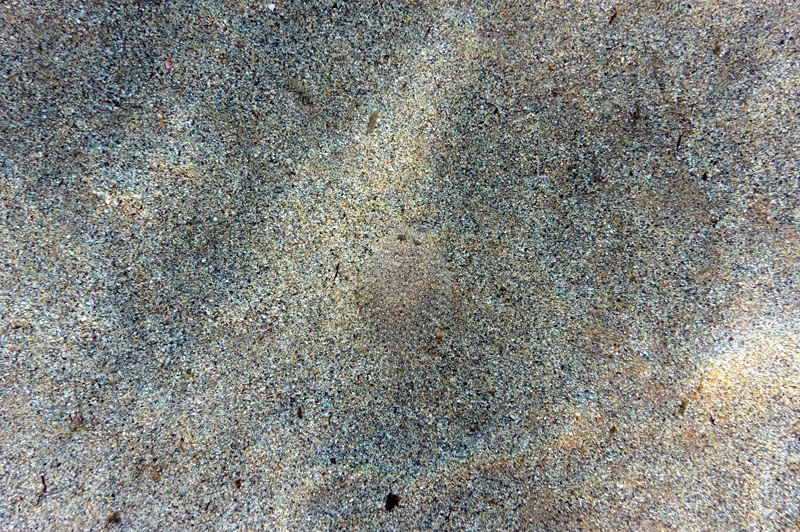
|
|
A flatfish, captured in Minorca with the D700 plus the AF-S Micro 60mm at F8. |
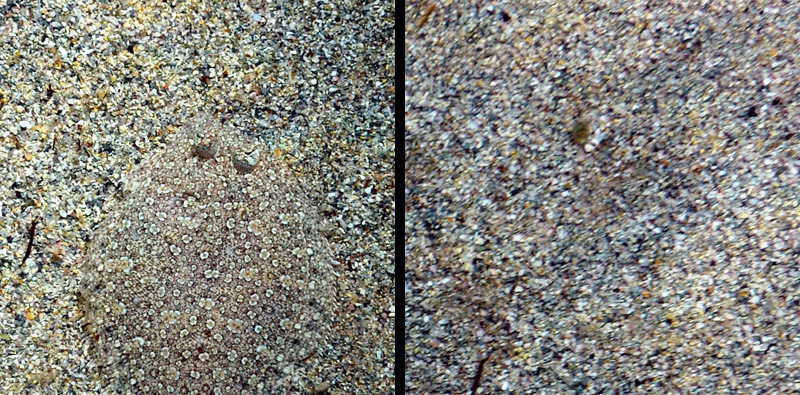
|
|
50% crops: on the left from the centre of the frame, on the right from the upper right corner. All corners look the same! |
I have no idea what is going on here! What is the difference between the two lenses under water? I do not know much about optics and I have only a guess: the position of the front element is significantly different:
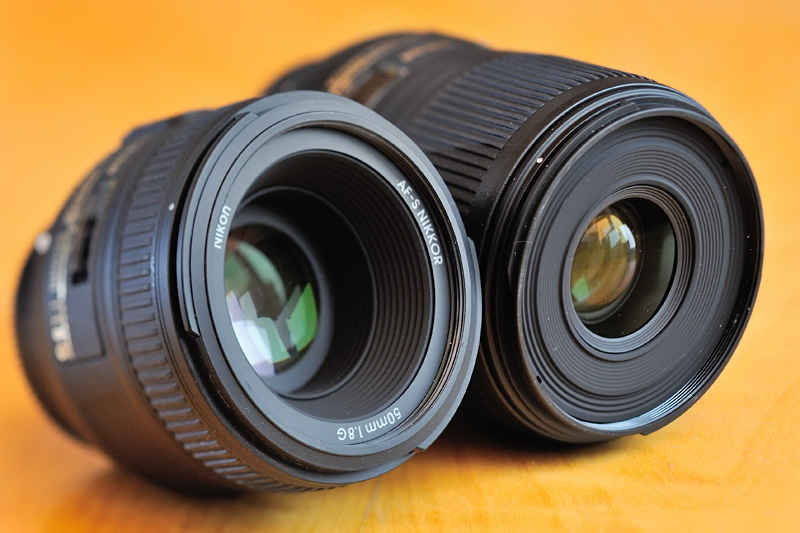
|
|
The 50mm has a deeply recessed front element while the front element of the 60mm is not recessed. |
Maybe I should give the 60mm a second chance under water: I am thinking about mounting extension rings between the lens and the front glass of the housing...
You can double your distance without changing the magnification when you use a 105mm lens instead of a 50mm lens. That is true in both air and water. In air you can do that without a significant loss of quality. But under water you must keep some things in mind:
These are my current ratings for the underwater performance of the four lenses (max. 5):
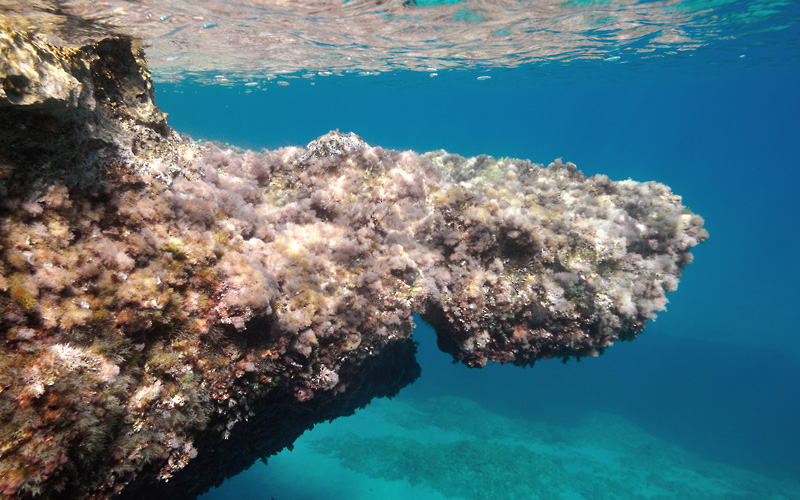
|
|
Spectacular landscape under water in Minorca. D700, AF-S 17-35mm @20mm, ISO 800, F13, 1/125 sec. |
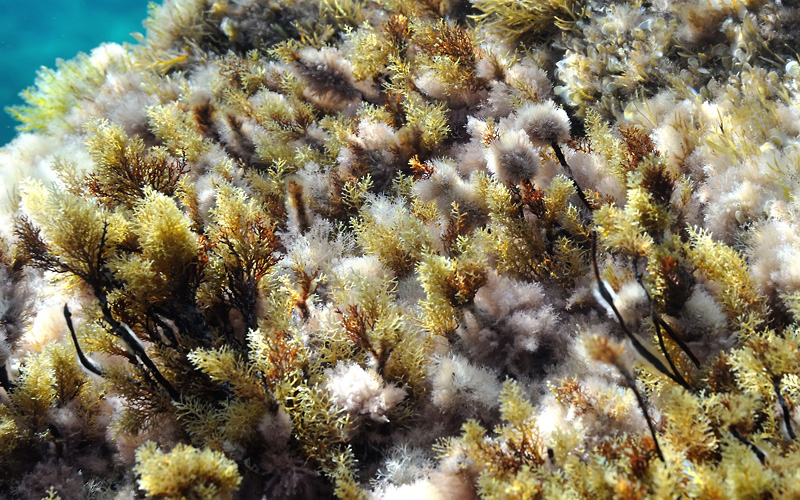
|
|
"Autumn atmosphere" in the Mediterranean Sea, Minorca, October 2013. D700, AF-S 50mmm f/1.8, ISO 1000, F8, 1/800 sec. |
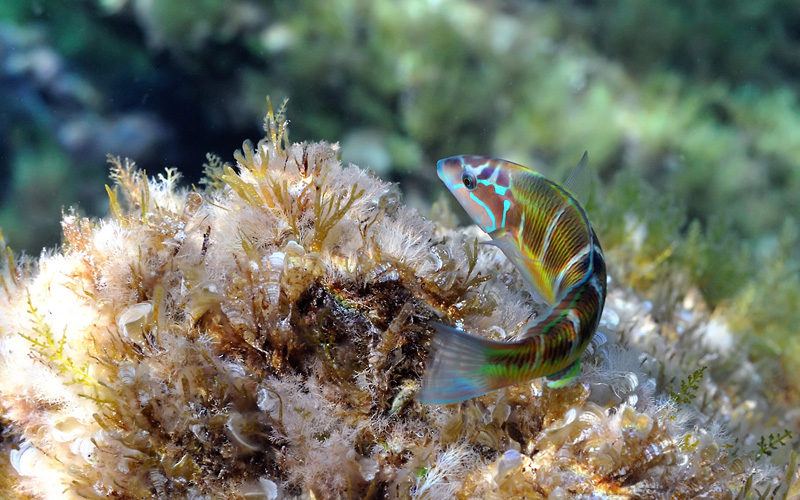
|
|
Ornate wrasse, Minorca. D700, AF-S 50mmm f/1.8, ISO 1000, F8, 1/500 sec. |
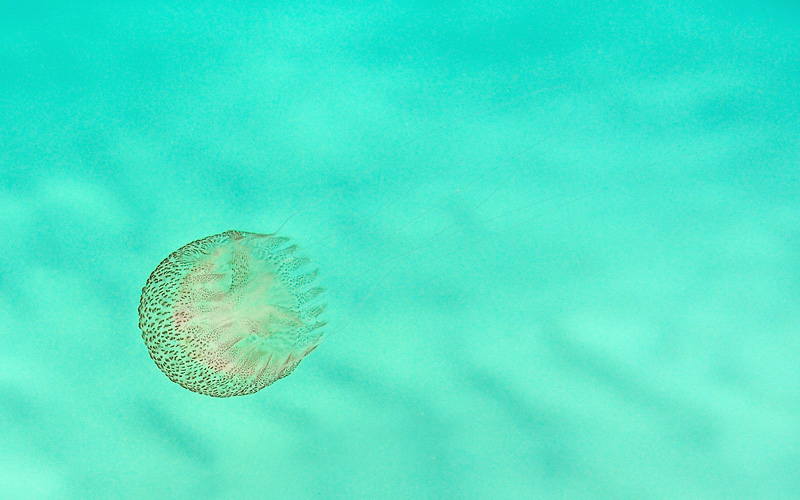
|
|
Pelagia noctiluca, Minorca. D700, AF-S Micro 60mm, ISO 1000, F10, 1/640 sec. |
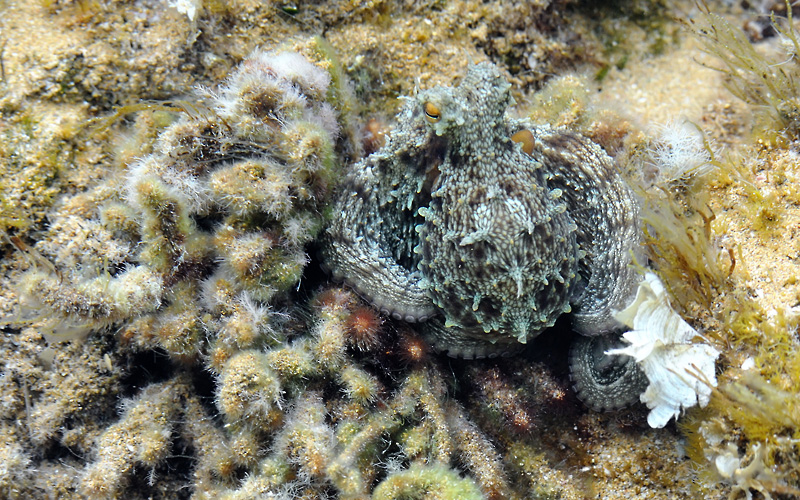
|
|
Octopus's Garden, Minorca. D700, AF-S Micro 105mm, ISO 1600, F8, 1/320 sec. |